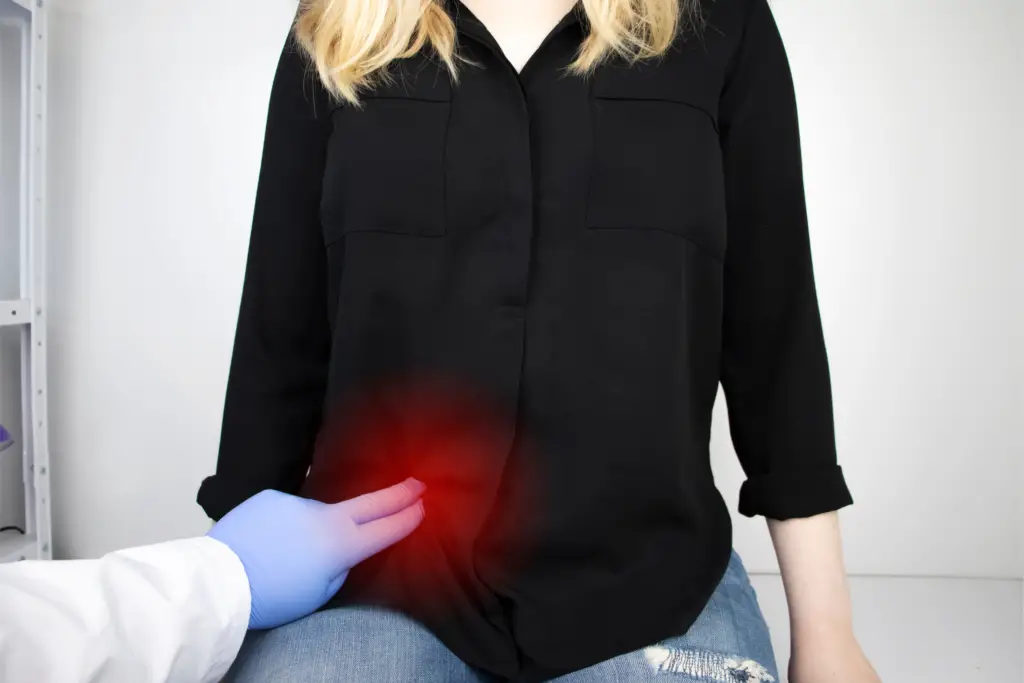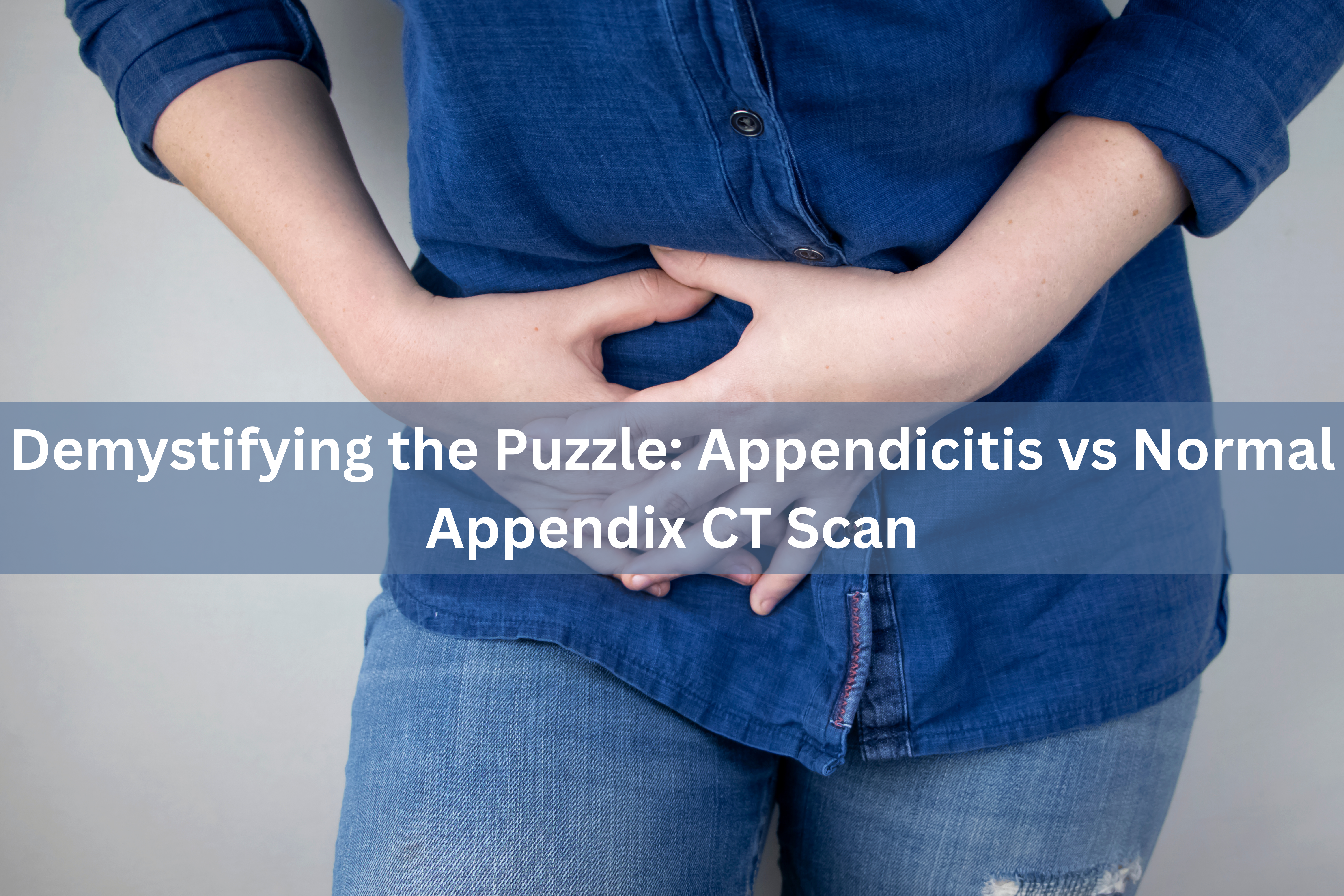In the world of medicine, diagnosing ailments accurately and promptly is paramount. When it comes to the mysterious realm of the appendix, the distinction between a healthy organ and one inflamed with appendicitis can be a challenging puzzle. Enter the CT scan—a remarkable tool that plays an instrumental role in this diagnostic journey. Let’s embark on this enlightening quest together.
What is Appendicitis?
A ticking time bomb in the abdomen, appendicitis refers to the inflammation of the appendix. It’s akin to having an angry guest in a house party—uninvited, unwelcome, and potentially hazardous. Appendicitis requires timely intervention, often surgical, to prevent life-threatening complications.
Symptoms of Appendicitis
Often starting as a vague pain around the navel, the discomfort in appendicitis notoriously travels to the right lower abdomen. Accompanied by fever, nausea, and a loss of appetite, these symptoms sound an alarm that medical attention is imminent.
How a CT Scan Works
Picture this: a massive donut taking snapshots of your insides. That’s a CT scan for you! Using a combination of X-rays and computer technology, it creates detailed images of the body’s internal structures. Think of it as a behind-the-scenes peek into the body’s inner workings.
The Role of CT Scans in Diagnosing Appendicitis
A CT scan is akin to a detective, revealing clues about the state of the appendix. By providing cross-sectional views of the abdomen, it offers invaluable insights, distinguishing between a regular appendix and an inflamed one.
The Importance of an Accurate Diagnosis
Misdiagnosing appendicitis can be costly, both health-wise and financially. Imagine treating a benign condition with unnecessary surgery! Hence, having clear images from a CT scan becomes a game-changer, ensuring that the treatment matches the ailment.
Appendicitis vs Normal Appendix on a CT Scan
In the epic showdown between a normal appendix and one with appendicitis on a CT scan, distinct differences emerge. While an inflamed appendix appears swollen, with surrounding fat stranding, a normal one remains inconspicuous, blending seamlessly with neighboring structures.
Identifying Features of Appendicitis in CT Scans
Look out for the tell-tale signs! Enlarged diameter, wall thickening, and the presence of an appendicolith (a calcified deposit) often ring the appendicitis bell in CT scans.
Normal Appendix Appearance on a CT Scan
Flying under the radar, a healthy appendix on a CT scan is usually tubular, with a clear, thin wall and devoid of any surrounding inflammation. It’s like spotting a serene lake amidst a bustling city.
Common Misconceptions about CT Scans and Appendicitis
From fearing radiation to mistaking a regular appendix for an inflamed one, misconceptions abound. It’s crucial to debunk these myths to ensure patients make informed choices.
The Procedure: What to Expect During a CT Scan
Lying on a sliding bed, being whisked into a large, circular machine—sounds like a sci-fi movie scene, doesn’t it? But that’s the CT scan experience in a nutshell. Painless and quick, it’s over before you even know it.
Preparing for the CT Scan
From fasting to wearing comfortable clothes, a little preparation goes a long way in ensuring a smooth CT scan process.
Post-Scan: What Comes Next
After the scan, the film rolls into the hands of the radiologist—a film critic of sorts. Interpreting the images, they paint a clear picture of the state of the appendix.
Potential Risks and Benefits of CT Scans
Like two sides of a coin, CT scans come with their set of pros and cons. While they provide unparalleled clarity, concerns about radiation exposure can’t be ignored.
Alternatives to CT Scans for Diagnosing Appendicitis
From ultrasounds to MRIs, there’s a world beyond CT scans. Each modality, with its strengths and weaknesses, caters to different diagnostic needs.
How Radiologists Interpret CT Scans
Delving into the grayscale images, radiologists play detective. They connect the dots, drawing conclusive evidence about the appendix’s state.
Personal Experience: My Journey with Appendicitis and CT Scans
Navigating the tumultuous waters of appendicitis, I recall my firsthand experience. The pain, the anxiety, and the eventual relief post-diagnosis—it was a rollercoaster, to say the least.

The Evolution of CT Scan Technology Over the Years
From grainy images to high-resolution snapshots, CT scan technology has come a long way. Charting its journey, we realize the leaps and bounds in medical imaging.
Deciphering Medical Jargon: Terms to Know
Appendicolith, stranding, contrast—drowning in a sea of medical terminology? Fear not! Here’s a handy guide to make sense of it all.
Frequently Asked Questions (FAQs)
How long does a CT scan take?
A typical CT scan lasts anywhere between 10 to 30 minutes. It’s quick, efficient, and relatively hassle-free.
Can I eat before my CT scan?
Depending on the region being scanned, dietary restrictions might be in place. It’s always wise to follow the radiology department’s guidelines.
Is the radiation from a CT scan harmful?
While CT scans do emit radiation, the dose is relatively low and is considered safe for most individuals. However, always discuss any concerns with your healthcare provider.
Are there side effects post-scan?
Most people don’t experience side effects. However, if contrast was used, some might feel a warm sensation or have a metallic taste temporarily.
How soon can I expect results?
Typically, results are available within a day. However, emergency cases might receive immediate interpretations.
Can children undergo CT scans?
Yes, but pediatric protocols, which use lower radiation doses, are employed for children.
Real-life Stories: Patients Share Their Experiences
Journeying through the labyrinth of medical diagnoses can be daunting. Hearing from those who’ve treaded this path before offers solace and insights.
The Future of Diagnosing Appendicitis
As technology gallops ahead, what does the future hold for diagnosing appendicitis? From AI-assisted interpretations to non-invasive methods, the horizon looks promising.
Comparing CT Scans with Other Imaging Modalities
Stacking up CT scans against ultrasounds and MRIs, we find each modality shining in its unique way. It’s all about picking the right tool for the job.
Tips for a Smooth CT Scan Experience
From arriving early to staying calm, a few simple steps can ensure that your CT scan goes off without a hitch.
Understanding the Costs and Insurance Implications
Medical bills can be baffling. Demystifying the costs associated with CT scans and navigating insurance coverage becomes crucial.
Making an Informed Decision: To Scan or Not to Scan
Endowed with knowledge, the decision ball is in your court. Trust your instincts, consult your doctor, and make an informed choice.
Conclusion
Deciphering the riddle of appendicitis vs normal appendix on a CT scan might seem daunting at first. However, with the right knowledge, tools, and guidance, the journey becomes enlightening. Remember, knowledge is power. Here’s to making informed decisions and ensuring optimal health!

